Winding cobblestone streets, pastel-coloured houses, fortified walls with gates and turrets – walking through the Old Quarter of Tallinn feels like you’ve been transported directly into the pages of a fairy tale. We loved Tallinn, though I have to say if we thought the people of Helsinki were stoic, the Estonians border on surly. I think the Bolt driver (the Baltic’s version of Uber) who picked us up from the ferry terminal might have growled in greeting.
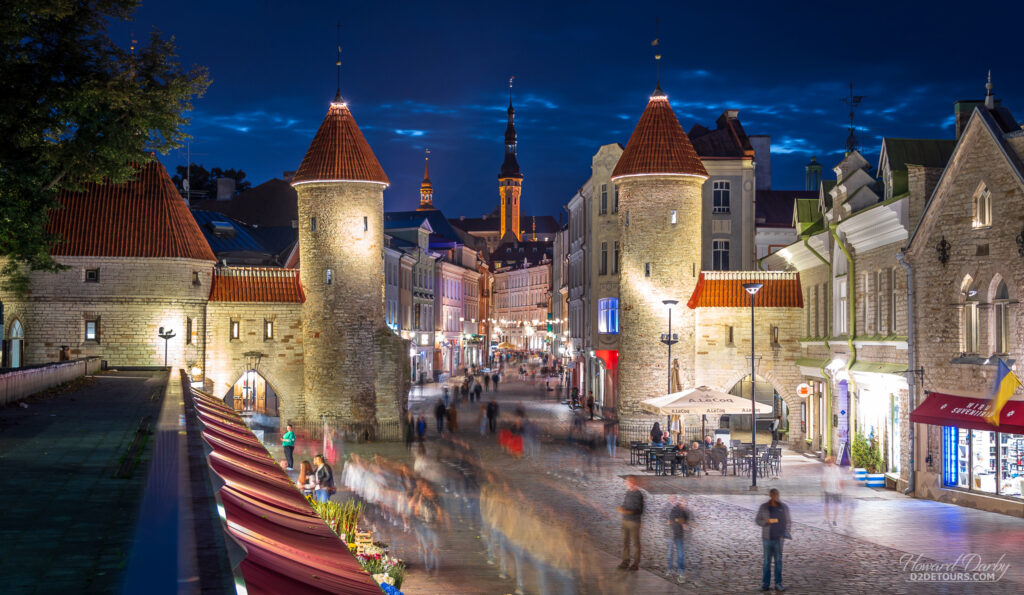
It may surprise you to learn that there were Estonian Vikings! Or at least there were seafaring tribes living on the island of Saaremma who were engaging in Viking-like raids and counter-raids all around the Baltic Sea. These pirates even sacked the Swedish capital of Sigtuna in the 12th century which, interestingly, coincides with the legend of how Stockholm got its name.
In the early 13th century, the German crusading order the Livonian Brothers of the Sword began religious forays into the last pocket of paganism in Europe, and although the Estonian tribes were vehemently opposed to a change of religion they were not a unified front. Over the next two decades, the Catholic crusaders slowly welcomed the tribes into the fold, finally converting the last of their heathen brethren (the tribes of Saaremma) in 1227.

Denmark conquered Estonia in the early part of the 13th century and although they soon divested themselves of these holdings they certainly left a mark on the country. It would be the Germans, however, who would truly shape this country. Like a medieval European Union, the German-led Hanseatic League was a mercantile and military association that dominated trade activity in northern Europe from the 13th century to the 15th century. Several Estonian cities were members of the League, but Reval (as Tallinn was known at the time), who joined the League in 1285, was the jewel in the crown strategically positioned as it was at the crossroads of trade between western European and Russian principalities to the east. Toward the end of the 15th century, the Hanseatic League was losing strength and several powerful nations were stepping up their efforts to control the Baltic region: Poland-Lithuania to the south, Muscovy (Principality of Moscow) to the east, and Sweden to the west. War ravaged the region for the first half of the 16th century before the Swedes emerged as the victors in Estonia in 1561. Sweden ruled Estonia for roughly 150 years until the Russian tsar Peter the Great finally achieved the dream of his predecessors and conquered the Baltics. Initially, several agrarian laws greatly improved the lives of the Estonian peasants, including the right to own property, freedom of movement, and the abolishment of serfdom. However, as the 19th century progressed, “Russification” took hold. Baltic civil and criminal codes were replaced with Russian versions and the language of instruction, which had been both German and Estonian, became solely Russian.
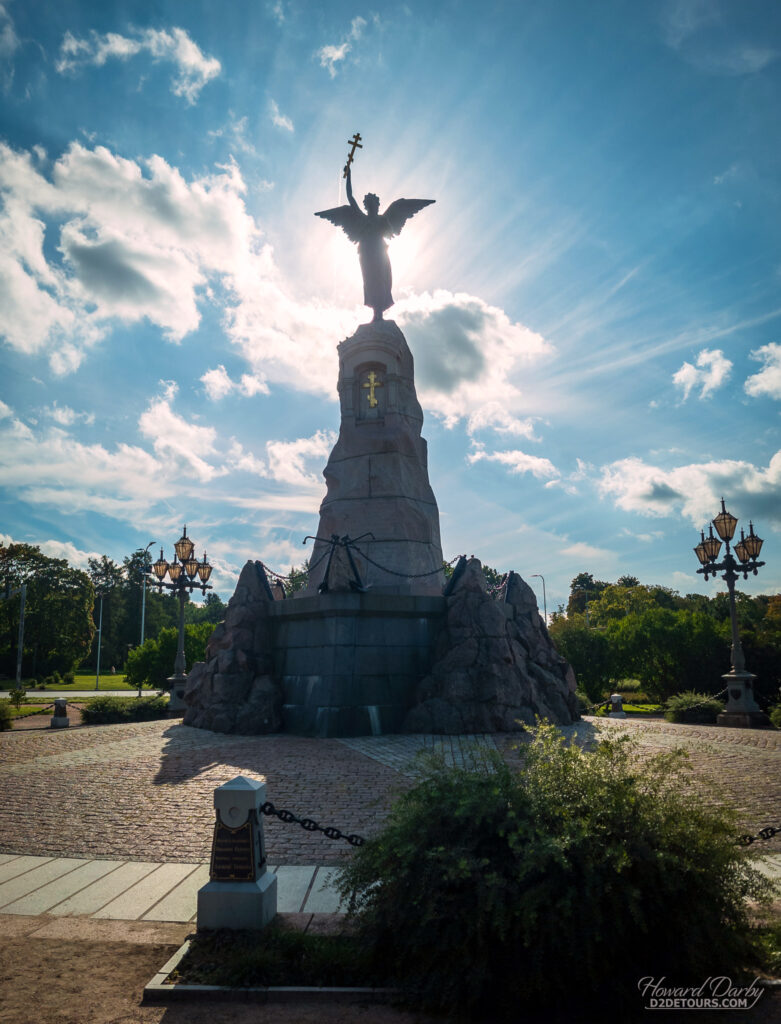
The civil unrest that began in Russia in the early 20th century soon spread to Estonia although it would take German-led forces in the First World War to oust the Russians from power. The resulting 1918 peace treaty between Germany and Russia granted Estonia autonomy within the sovereignty of Germany. One of Estonia’s first acts of autonomy was to rename their capital Reval (a Germanic name) to Tallinn (believed to derive from Taani-linna, Estonian for Danish castle). Estonia’s grip on independence was tenuous and short-lived. The German-Russian Nonaggression Pact of 1939 in effect allowed for the Russian occupation of Estonia, resulting in 50 years of terror and repression. The Estonian Soviet Socialist Republic was one of the 15 countries comprising the USSR, but the seeds of freedom had been germinating almost from the moment of Russian occupation. The events of the late 1980s, including the fall of the Berlin Wall in 1989, helped propel this nation to true independence. In 1990, the republic changed its name to the Republic of Estonia and in a referendum held the following Spring, 78% of citizens voted for independence. Estonia declared its independence from the Soviet Union on August 20, 1991.

Dollars – Our all-inclusive nomadic travel expenses for 7 days averaged out to $161/day Canadian ($118 USD / €112) which included the flight from Bangkok (prorated over the full 35 days we spent in northern Europe) and the fast ferry from Helsinki to Tallinn – we’re almost back to our target of $160/day! Basic day-to-day living expenses for the same 7 days (Airbnb, food, activities, local transportation) averaged out to $110/day Canadian ($80 USD / €77).

Environment – We stayed in an AirBNB just outside the gates to the old town, about a 5-minute walk to the Viru Gate. Not being inside the old town proper did provide a slight savings in the nightly rate and was also quite peaceful. By European standards, the building was fairly new (20 years old) and the unit itself was modern, spacious, and very comfortable – it even had a dishwasher which is always a treat.
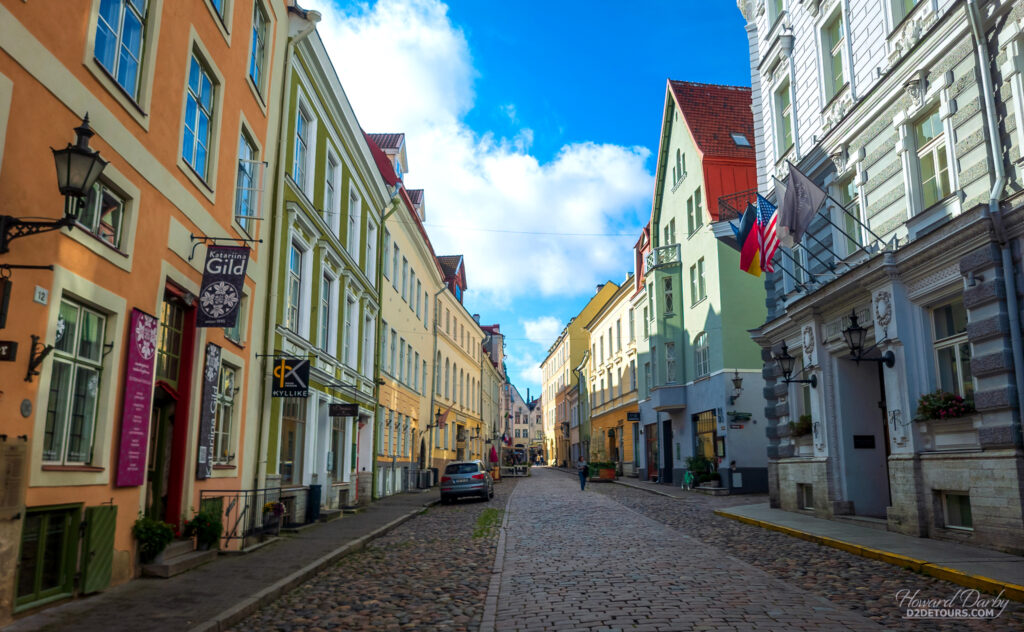
Tips, Tricks & Transportation – There are several ferry lines offering service between Helsinki and Tallinn, we opted for the Viking Line which was the mid-price option, working out to roughly $30 CAN/pp for the 2-hour crossing. The ferries run regularly throughout the day and the route is a popular day trip option with the added bonus of duty-free shopping on board (we picked up more chocolate and wine at significant savings). Rarely are the seas rough for this short crossing; we lucked into one of the rare days. We had positioned ourselves at the bow of the boat because we’d read that Tallinn is a pretty city to see from the sea and very quickly realized this was going to be problematic for me. I downed some Gravol (which I always keep in my backpack, just in case) and slowly moved mid-ship, having to pause between each step to adjust to the heave and sway of the ship on the waves. Fortunately, the new location kept any actual vomiting at bay – Howard did very kindly ensure we had seats near the restrooms.

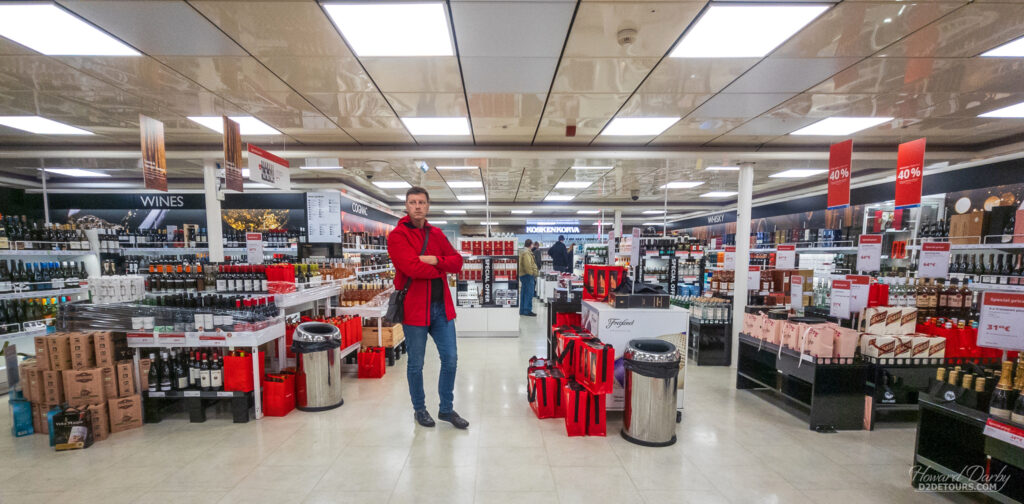
Out and About – The city of Tallinn has done a superb job with signage explaining the history of the streets and buildings in the Old Quarter and we thoroughly enjoyed several days wandering the cobblestone streets. These are just a few of the highlights from our path through this picturesque medieval town, beginning with the iconic watchtowers of the Viru Gate, part of the barbican (outer defences) built in the 14th century to protect the city of Reval.
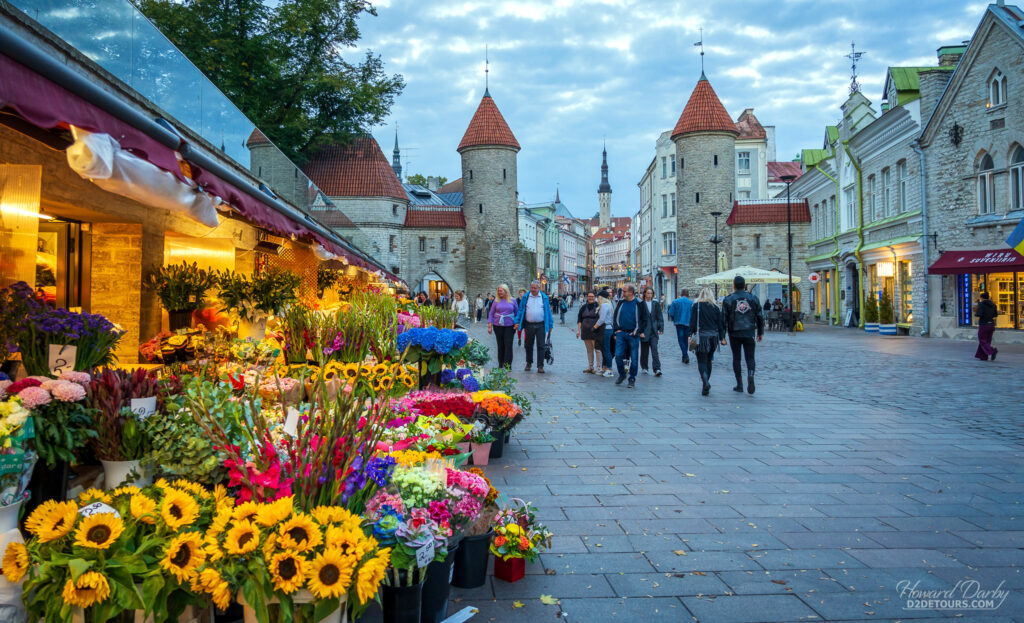
After passing through the gates we headed to St. Catherine’s Passageway, a vaulted alleyway running beside St. Catherine’s Church, part of a Dominican monastery dating from 1246. A mini museum of 14th and 15th-century gravestones found on the friary grounds has been mounted to a section of the wall of the Church, which seems like a more respectful place to display them rather than the floor of a barn where several had been used as paving stones in the 19th century.

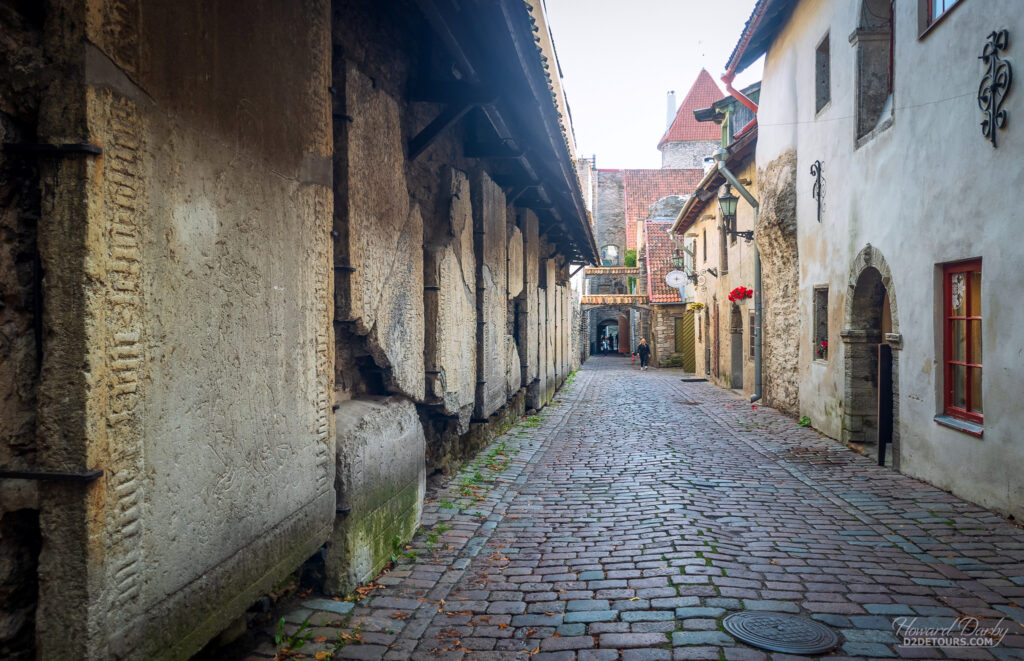

Fat Margaret’s Tower was the gateway to the town when entering from the sea. What stands today is part of a reconstruction of the city’s gate system in the 16th century. “Fat” is in reference to it being the largest city fortification, measuring 25 m in diameter and 20 m in height with 5 m thick walls (82 ft x 65 ft x 16 ft) – why Margaret was disparaged was unclear. In addition to acting as a deterrent, the scale of the tower was meant to impress anyone arriving by sea.
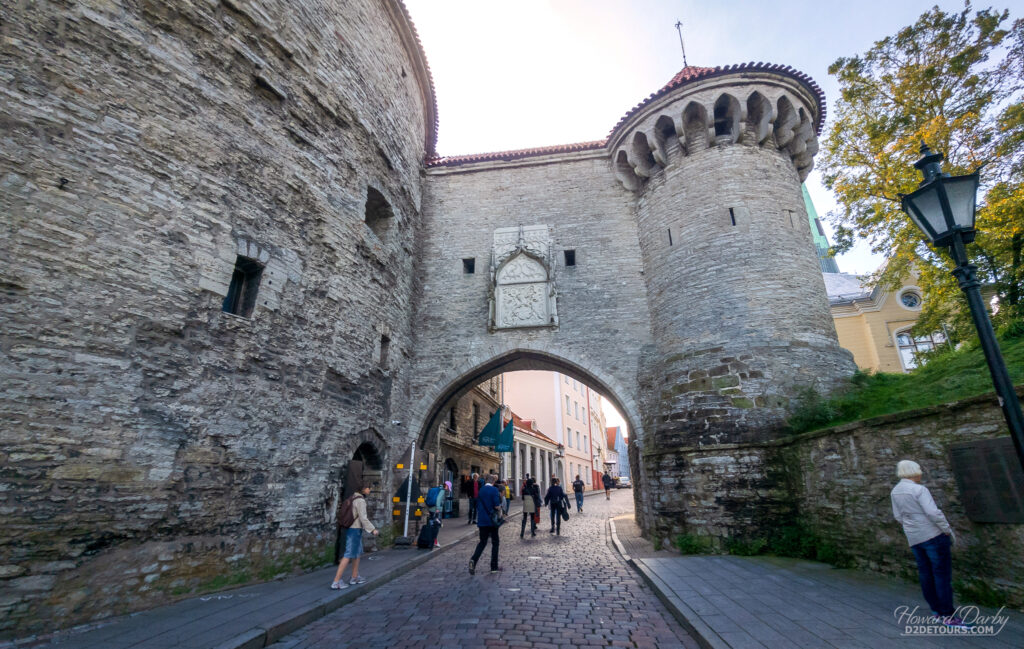
Spices, meats, and grains were bought and sold from warehouses lining Pikk (Long) Street. The beautifully preserved Three Sisters are 14th-century adjoining buildings with loading hatches and winches used for hoisting goods up and down from the upper floor warehouses still visible. Ownership of these gabled houses can be accurately traced back to 1362; today the pretty sisters are a boutique hotel.
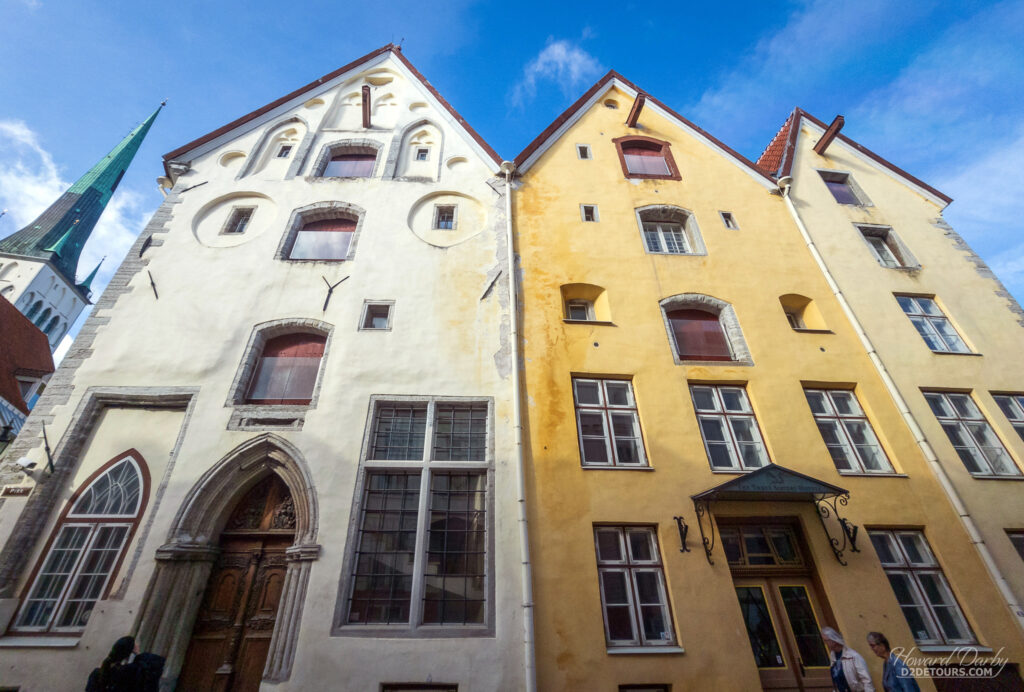
The 13th-century church, St. Olaf’s, was named in honour of Norway’s King Olaf II who was canonized for massacring pagans in Scandinavia in the early 11th century. The original church spire was 159 meters in height (522 ft) and until 1625 when a lightning strike caused it to burn to the ground was (reputedly) the tallest building in the world (the spire today is only 124 m / 407 ft). The Soviets may not have had any use for the teachings of the church, but they put its height to use, with the KGB supposedly using the spire as a radio tower and surveillance point from 1944 to 1991.
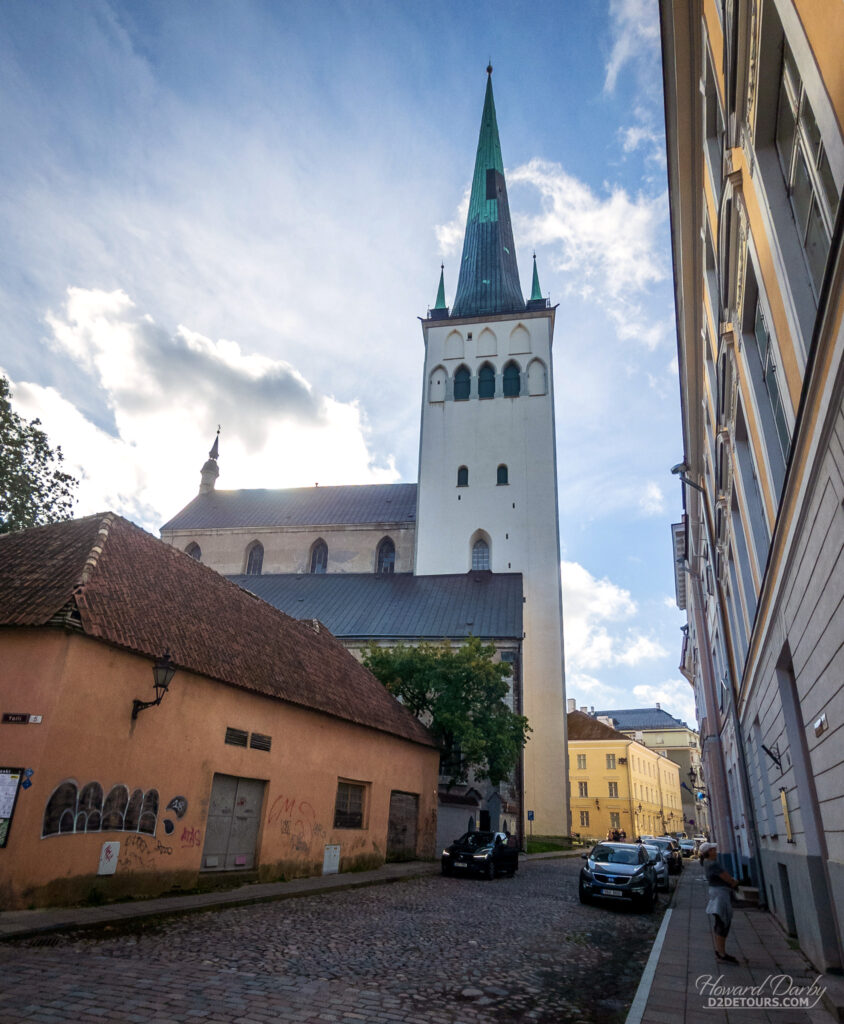
Another important building from the 13th century is the Church of the Holy Spirit (aka Holy Ghost Church), the first church in Estonia to hold services in Estonian and where copies of the catechism were first printed in Estonian (1535).

Bordered by magnificent medieval houses, Town Hall Square is home to one of the most hallowed symbols of Tallinn, the Town Hall which dates from 1404. A dignified building with green dragon waterspouts.
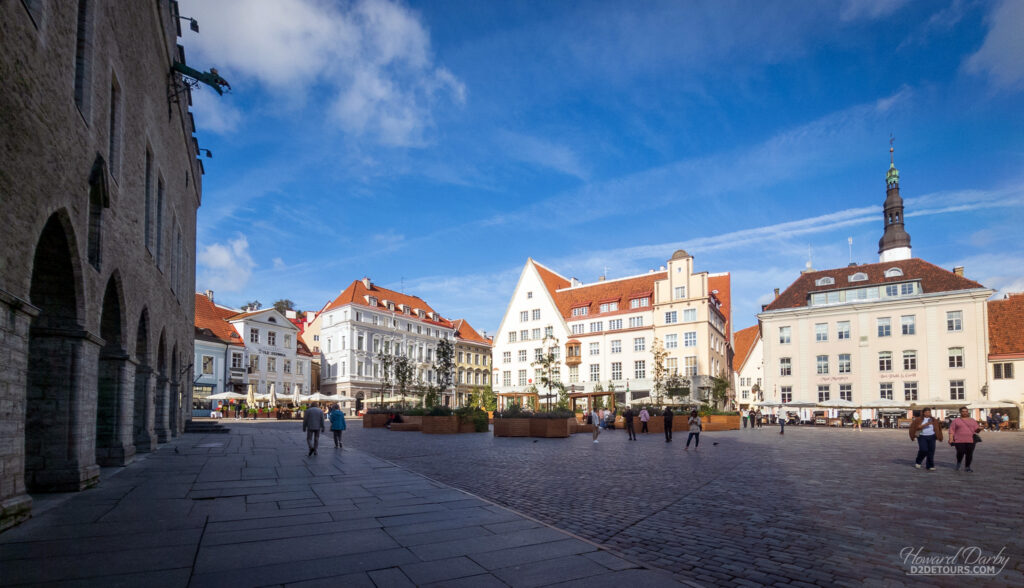
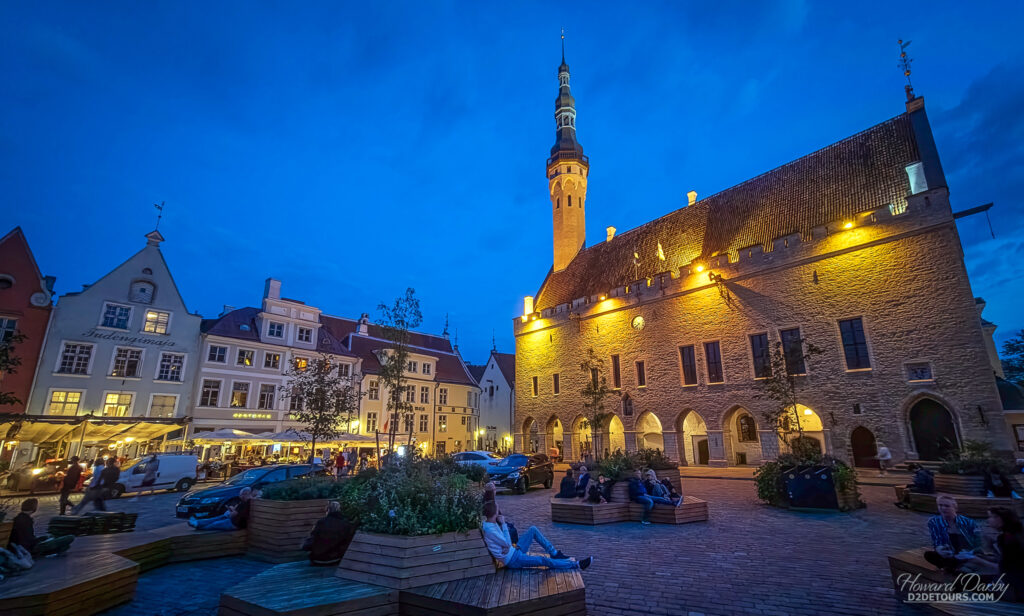
While Estonia was part of Imperial Russia (1710-1917), the Russians wanted to be sure the Estonians understood their Lutheran faith was subordinate to Russian Orthodoxy and in 1900 built the Alexander Nevsky Cathedral. Viewed as a symbol of Russian oppression, in 1924 the building was slated for demolition but a lack of funds left the building standing and it remains in use today.
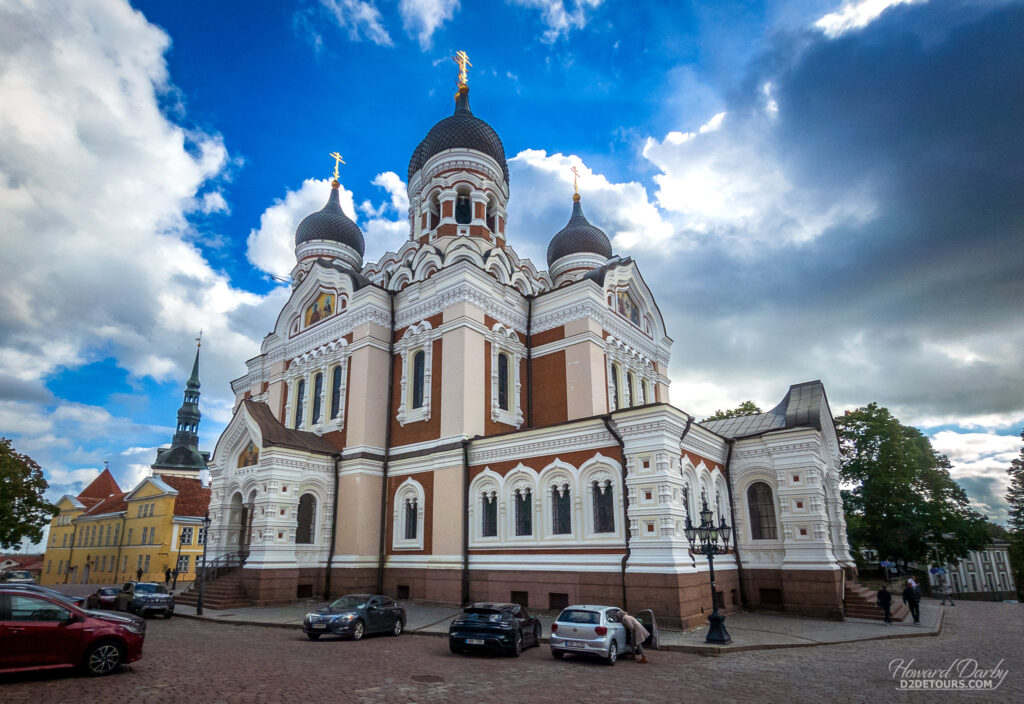
The Kiek-in-de-Kök Tower is a 15th-century artillery tower. It was given its nickname (which is low German for “peek into the kitchen”) because not only did its height (38 m / 125 ft) gave soldiers a good vantage point, it also allowed them to peek into the windows of nearby homes. Several cannonballs from fighting in the late 16th century are still embedded in the tower’s outer walls.
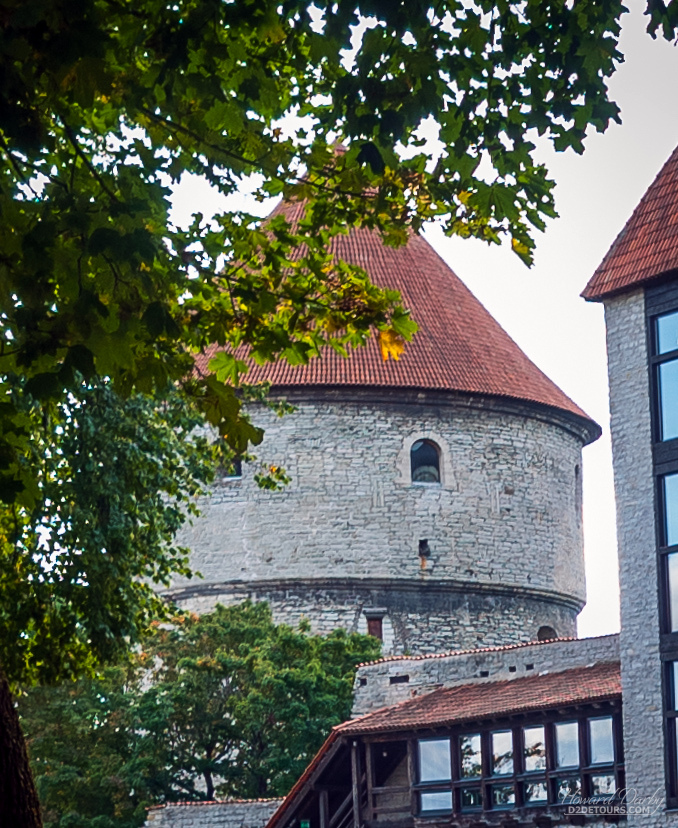
Legend says that during an Estonian uprising in the 13th century, a scrap of fabric emblazoned with a white cross on a red background floated down from the heavens, landing at the feet of the Danish troops attempting to quell the rebellion. This gift from God galvanized the Danes and propelled them to victory. The white cross on red became, and still is, the national flag of Denmark, making it the longest-serving national flag in the world. The location of this momentous occasion is the Danish King’s Garden, a gorgeous courtyard behind the walls leading to the Kiek-in-de-Kök Tower.
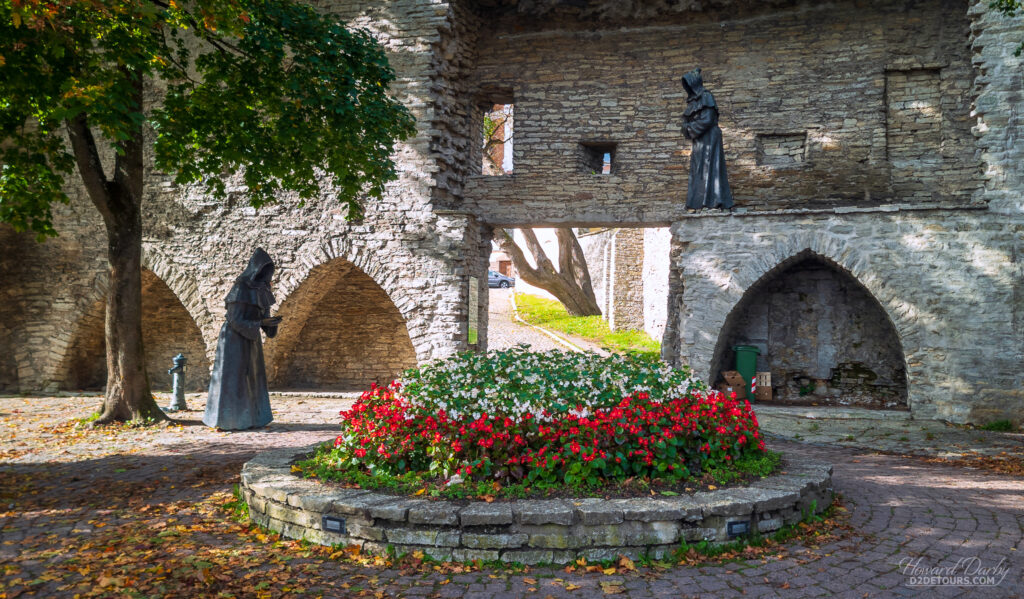
Tallinn outside the old city walls offers some unique points of interest too. Moscow was the host city for the 1980 Summer Olympics but with its inland location could not field a venue suitable for the sailing events. The harbour in Tallinn would, and did, serve nicely. The V.I. Lenin Palace of Culture and Sports, a concrete multi-purpose behemoth was constructed. In addition to a massive 5,000-seat amphitheater, the complex included an ice hall, a small seaport, and a heliport (which is still in use). Over time the venue, renamed Linnahall which means city hall although the structure has never been used for administrative purposes, was slowly abandoned. The ice hall was the last section of the building to close, shutting its doors in 2009. The city has tried to find investors to redevelop the property but any restoration would require a significant influx of cash, which has left the expanse of concrete walls ripe for graffiti artists.
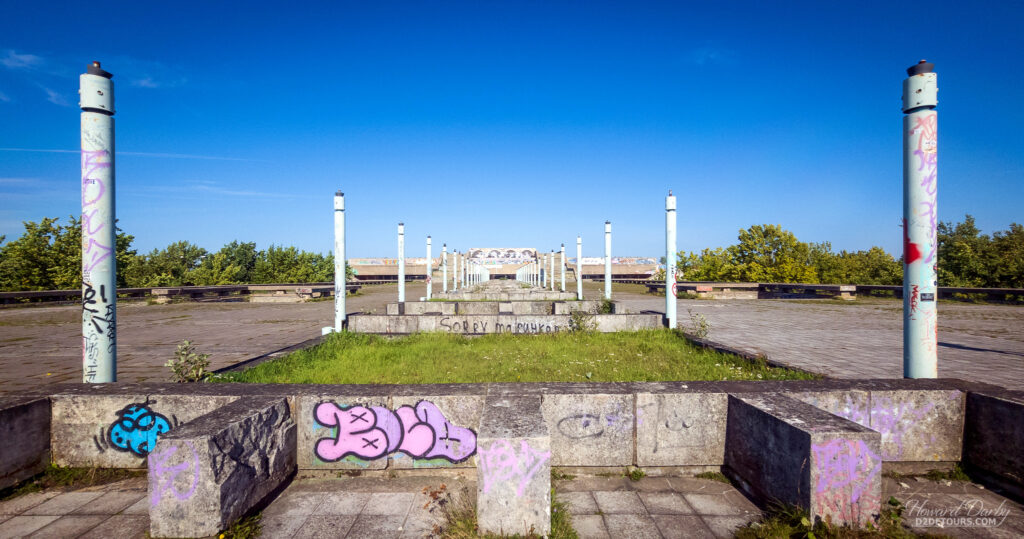
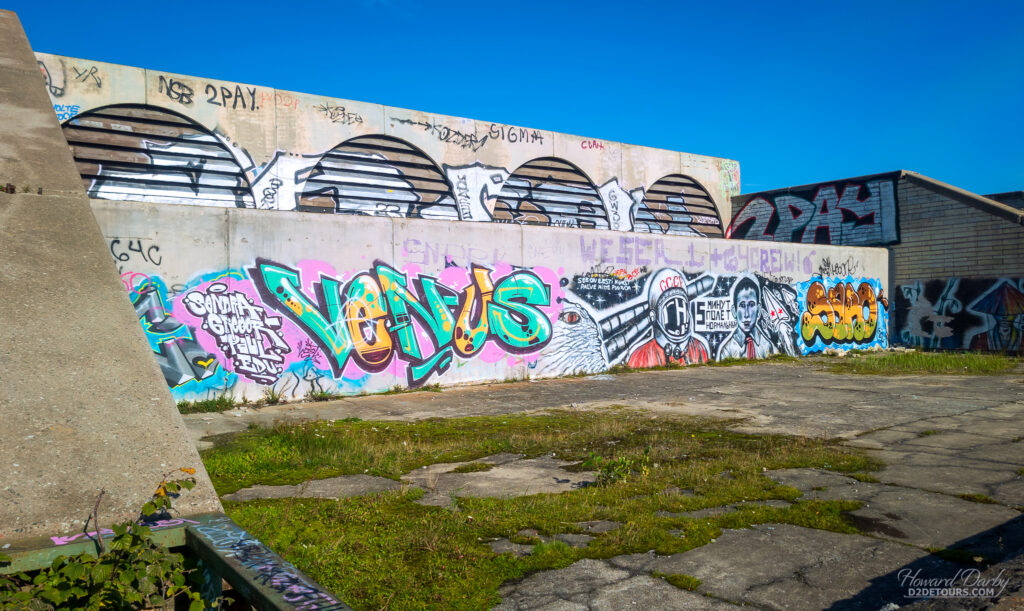
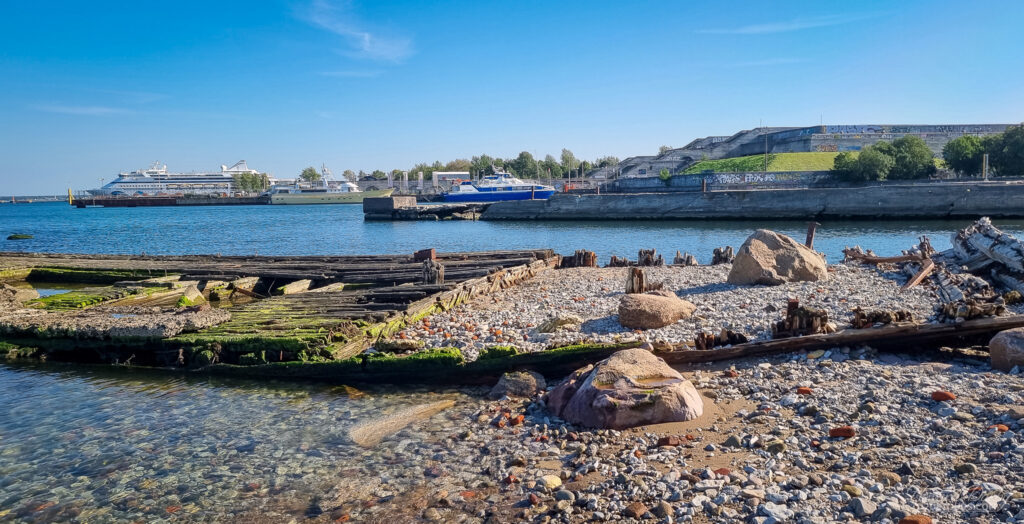
The Seaplane Harbour Maritime Museum is a short walk from the Linnahall and while we didn’t go inside there were a couple of interesting ships moored out front which one could admire from the dock and did have signage explaining their history.

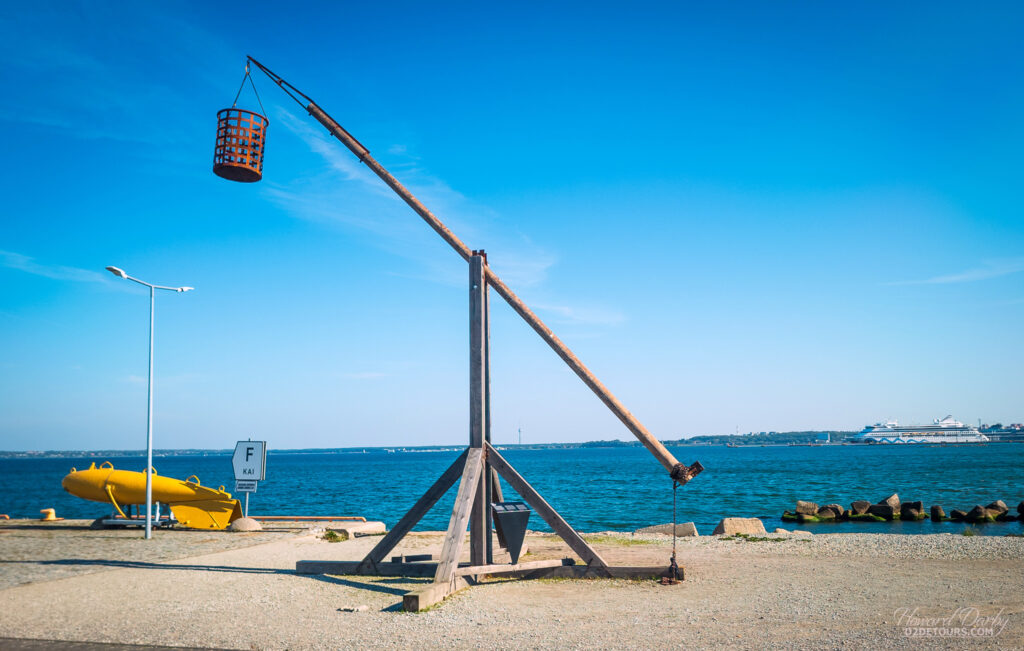
Following the successful siege of Reval in 1710, Peter the Great elected to gift his wife, Catherine (not to be confused with Catherine the Great), with a seaside palace. Construction on Kadriorg Palace (Catherine’s Valley) began in 1718 and was completed shortly before Peter’s death in February 1725. Catherine passed away just two years later, never having set foot in the palace. No other royal family members expressed any interest in the mansion and between 1741 and 1917 it served as the home of the Estonian governor, becoming state property in 1918. A work of art in its own right, beginning in the 20th century it has been used for various artistic exhibitions, and today as a branch of the Art Museum of Estonia displays foreign art from the 16th to 20th centuries.
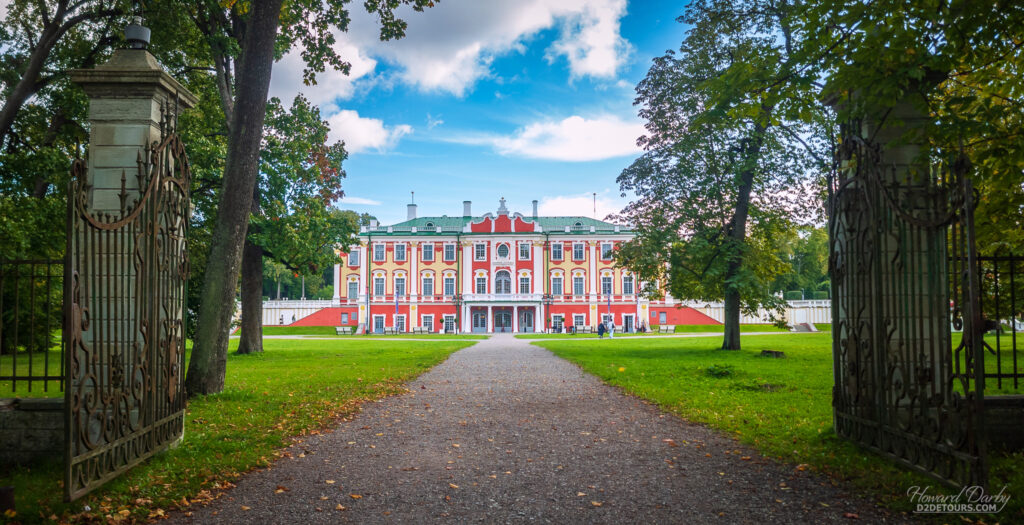
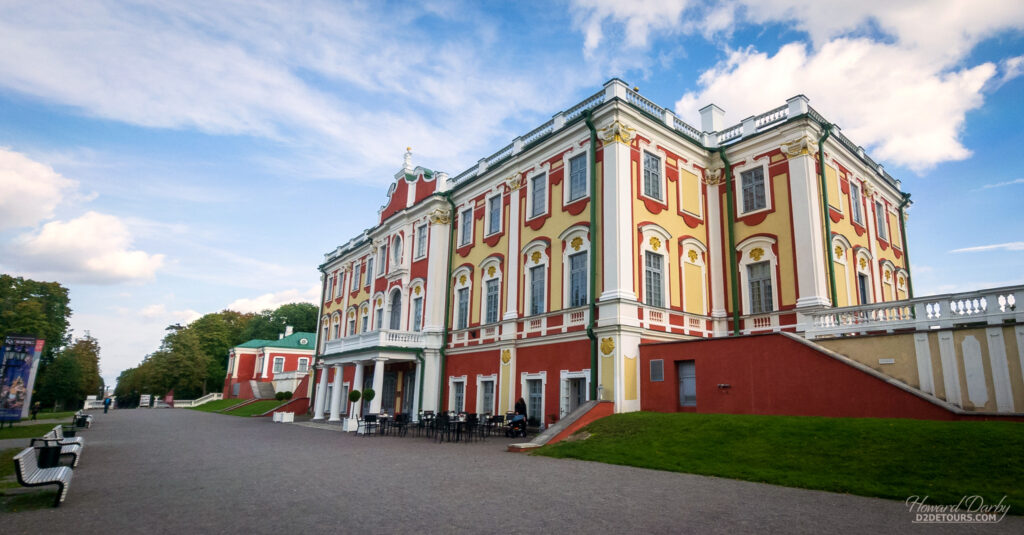
The Victims of Communism is a memorial dedicated to all the Estonian people who suffered at the hands of the Soviet Union between 1940 and 1991. During the Soviet occupation, Estonia’s population of roughly 1M was reduced by a fifth, with more than 75,000 people being murdered, imprisoned, or deported. The Memorial begins with The Journey a 200 m (656 ft) corridor lined with black metal walls inscribed with the names of 22,000 people who never returned home. It concludes with a powerful art installation of 22,000 honeybees, each a model of an actual living honeybee, overlooking the apple tree-filled Home Garden a “place where dreams, memories and the yearning for home are intertwined.”

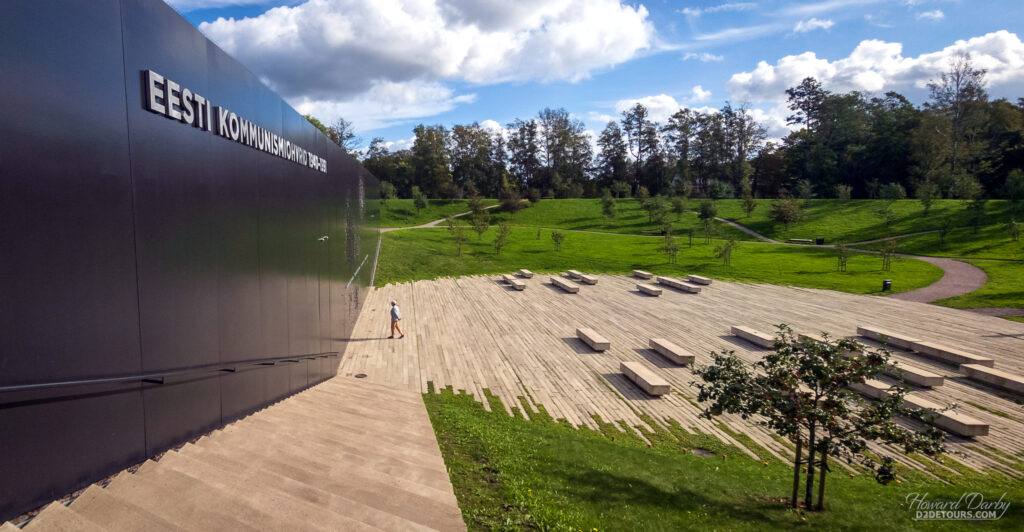
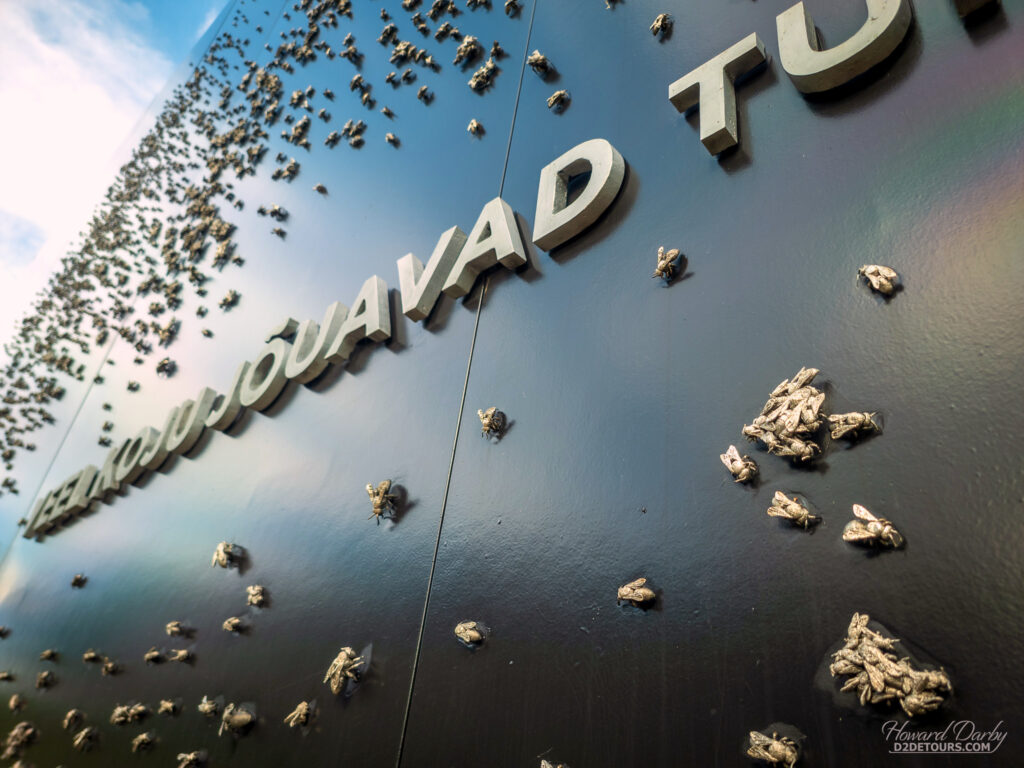
Interestingly in the same park as the Victims of Communism Memorial is the Maarjamäe Memorial which was dedicated in 1960 to those who gave their lives defending Russia in WWII. Whatever lingering animosity there may be for the Russian occupation of their homeland, it has not extended to this memorial which, while clearly not being maintained, has not been torn down nor significantly defaced.

Us – We really enjoyed our week in Tallinn. It is full of history, extremely walkable, budget-friendly, the weather is more in line with our constitution, and by September most of the tourists have left. Off to Riga, Latvia!
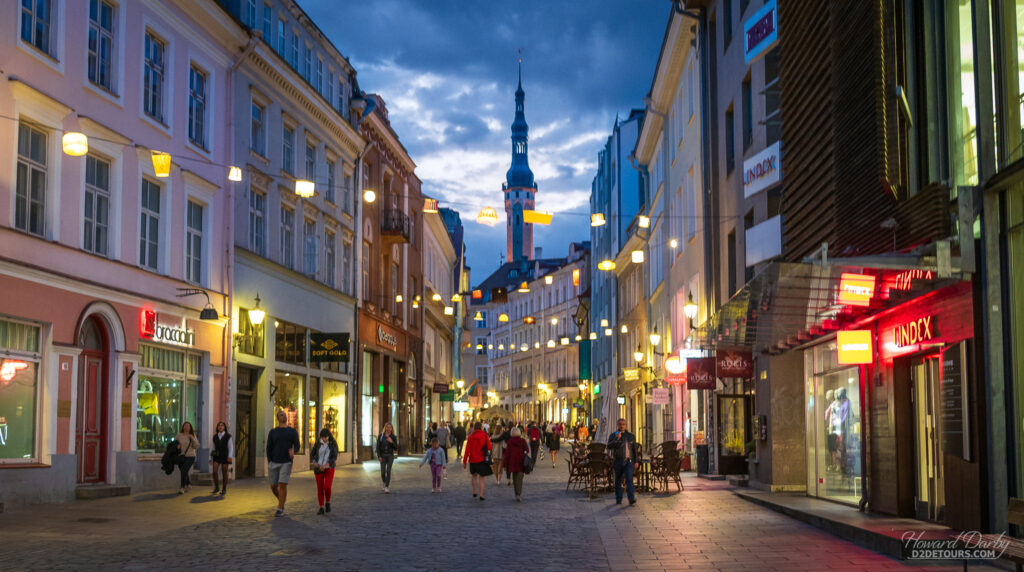
Restaurants – Tallinn considers itself to be the birthplace of the almond and powdered sugar confection known as marzipan. Lübeck, Germany disagrees, but we haven’t been there so we’ll have to take Tallinn’s word for it. It was originally sold in pharmacies to treat physical and mental disorders. The Raeapteek pharmacy, in the center of the Old Quarter, is the oldest continuously operating pharmacy in Europe and since 1422 has been dispensing the product to “ease the pangs of love.” Their recipe is a closely guarded secret containing 72% almonds, with the balance of their recipe consisting of “other” ingredients. By the 18th century, the majority of marzipan production had been transferred to the guild of sugar-bakers (confectioners) who began to incorporate it into pastries, with the percentage of almonds in the paste ranging from 30% (very sweet) to 60%, for a nuttier flavour. We stumbled across the Marzipan Gallery, an unassuming storefront on Pikk Street that in addition to selling the sweet treat offers classes in marzipan sculpting and painting. Their gallery of marzipan is in an exhibition room in the basement containing what can only be described as an eclectic range of sculptures.
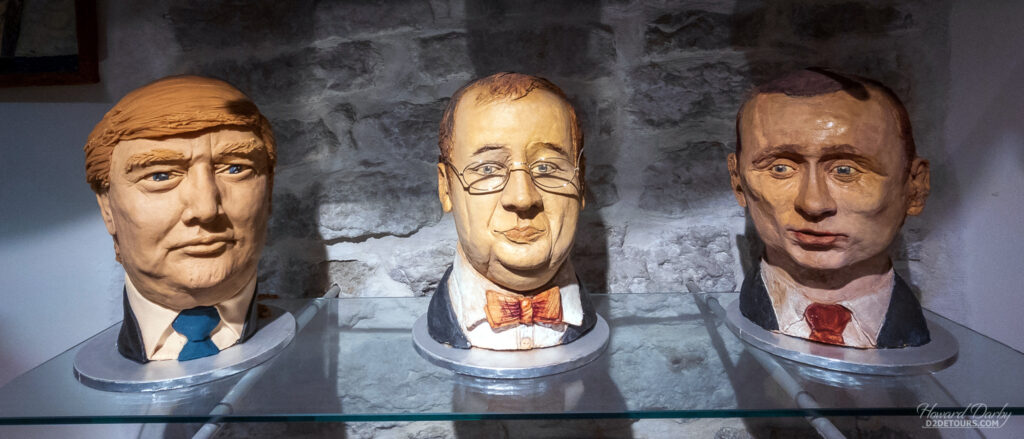
Speech – Roughly 50% of Estonians understand/speak English which is fortunate as Estonian is another non-indo-European language that can be difficult for English speakers to grasp. On the positive side, it is highly phonetic, you just need to first learn what sounds those letters make!
- Tere (TEHR-reh) – Hello;
- Hüvasti (HUE-vasti) – Goodbye;
- Jah (YaHH) – Yes;
- Ei (ay) – No;
- Palun (PAH-loon) – Please;
- Tänan (TA-nahn) – Thank you;
- Vabanda (VAH-bahn-dah) – Excuse me;
- Vabandust (VAH-bahn-doost) – Sorry;
- Ma ei räägi eesti keelt (MAH ay RAA-gee EHS-tee KEHLT) – I can’t speak Estonian.
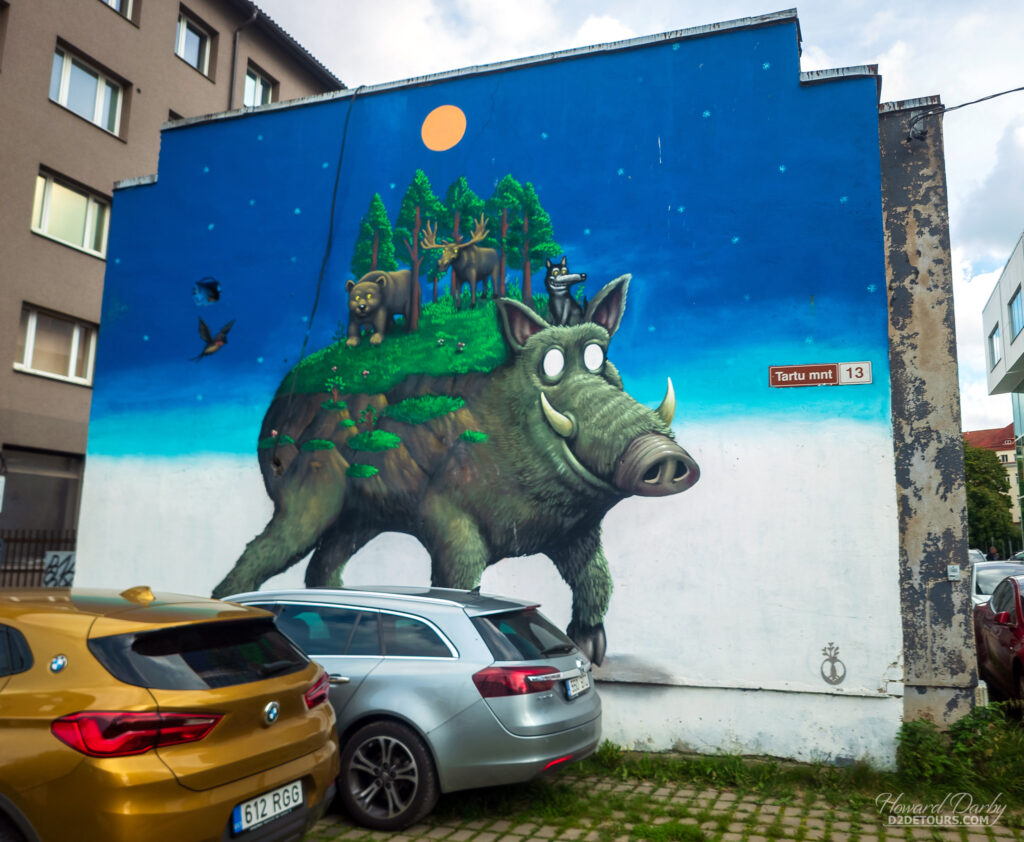
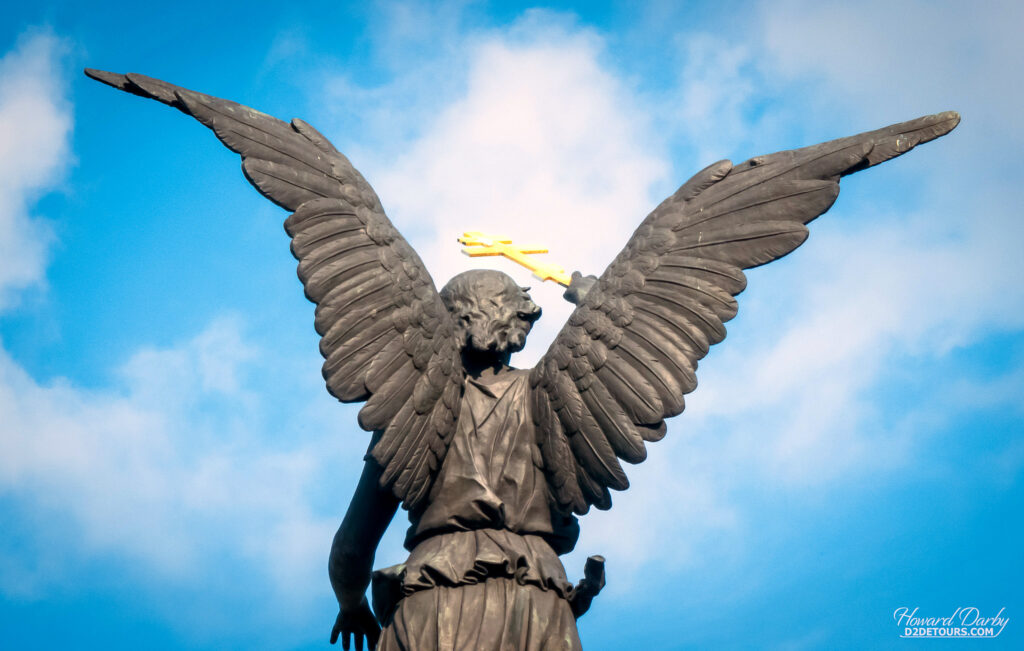
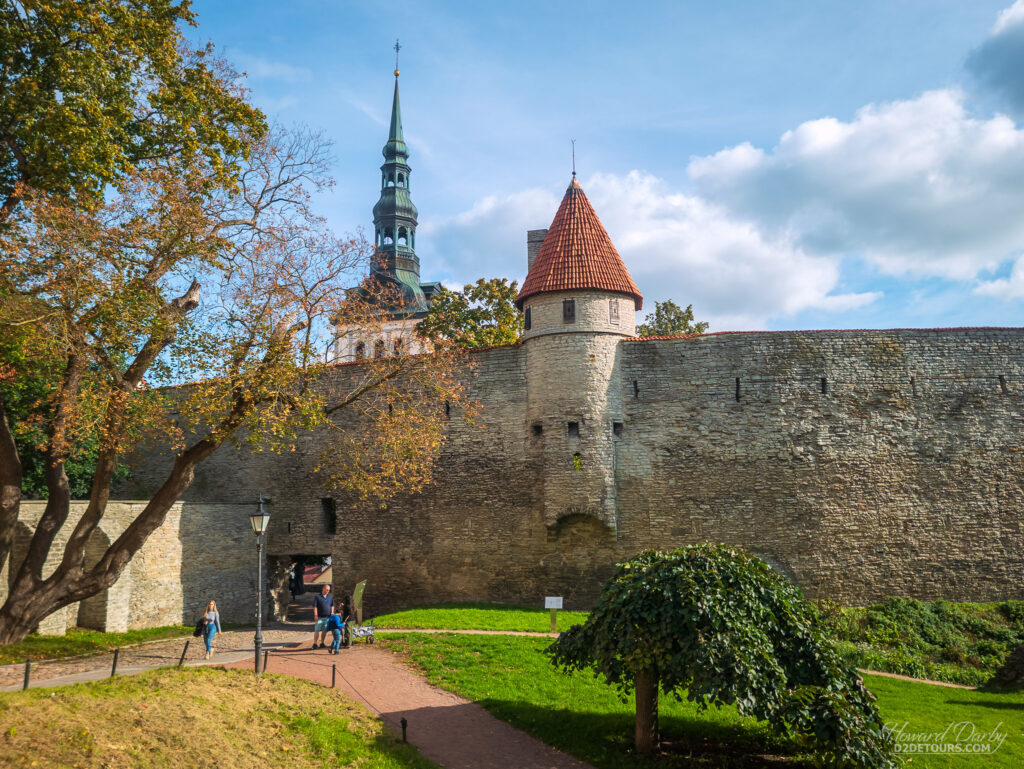
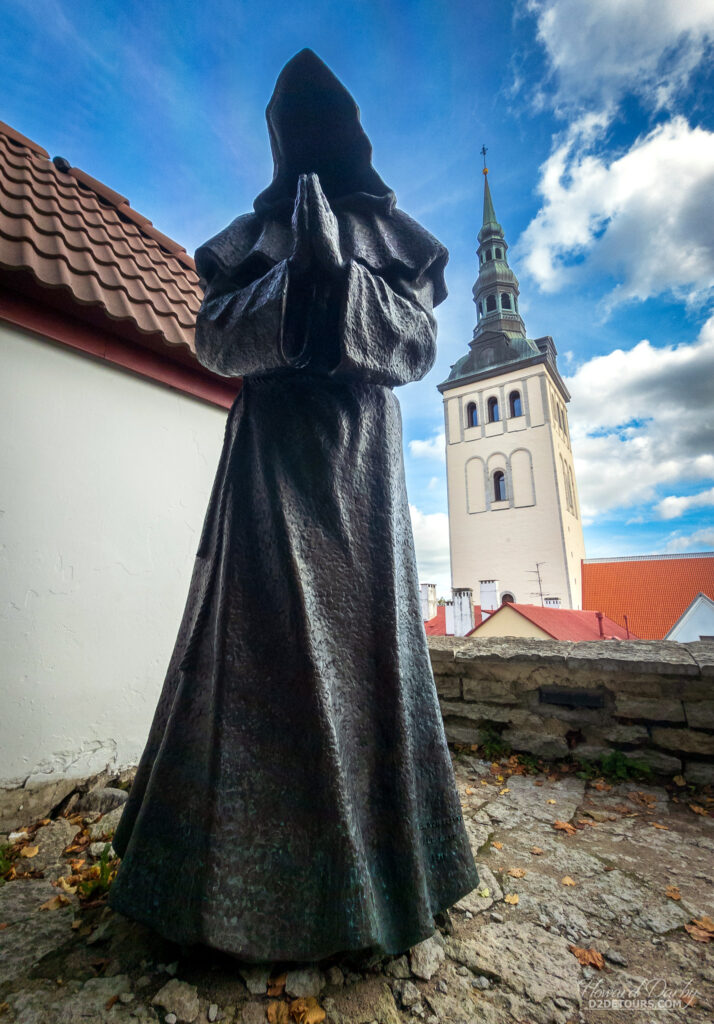
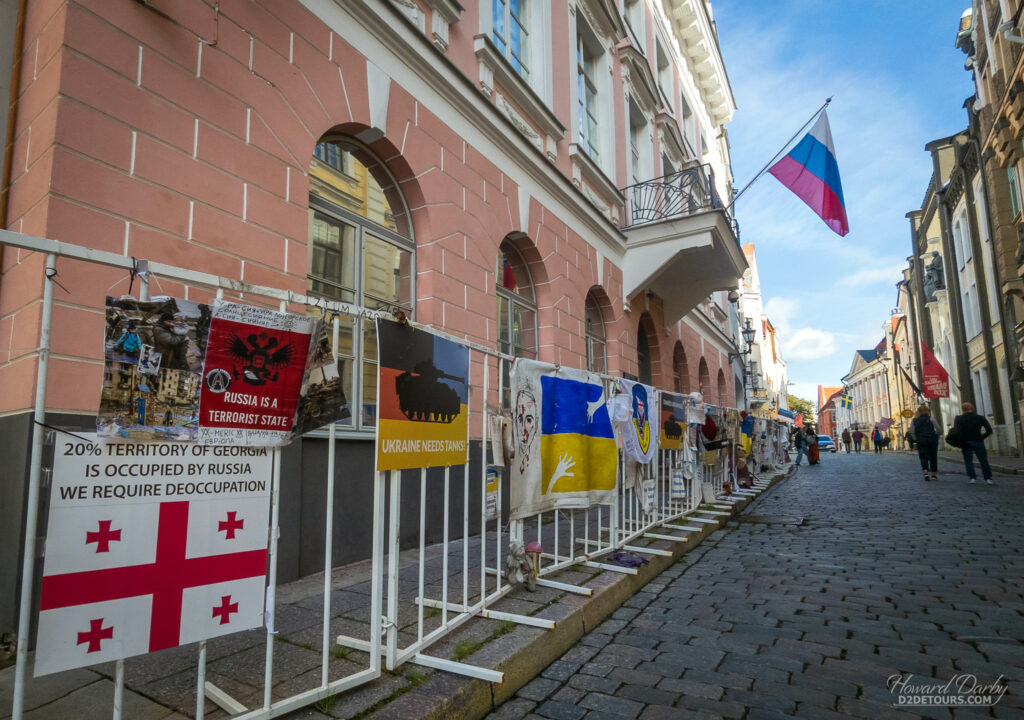


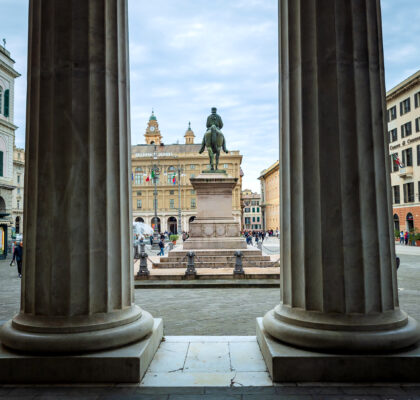
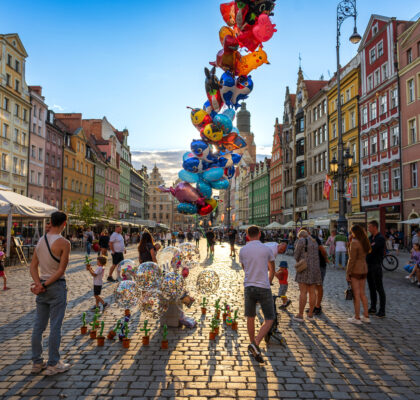
Pingback: Riga, Latvia: The Heart of the Baltics - D2 Detours
Pingback: Our Top 10 Destinations for Long Stays - D2 Detours